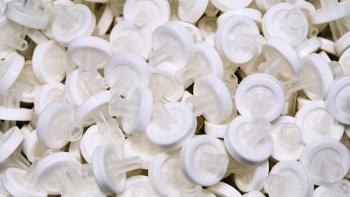
- BioPharm International-04-02-2011
- Volume 2011 Supplement
- Issue 3
Innovation and the Art of Downstream Processing
This summary provides an introduction to our special issue on Separation and Purification.
Few people would claim that process developers and artists have much in common. But at the boundary between art and technology it is clear that there exists a shared appreciation of beauty, simplicity and clarity, in one case generating aesthetic appeal, and in the other taking a complex challenge and crafting from it a simple and inexpensive solution by implementing more efficient design principles.
Such is the value of innovation in downstream processing, a concept that unites the articles presented in this special edition of BioPharm International. Innovation is a difficult concept to define, and an even more difficult concept to capture and apply in bioprocessing, particularly given the industry's reliance on long-established technologies that have evolved incrementally. Process chromatography is a prime example of incremental improvement in action. This bedrock of biopharmaceutical manufacturing processes has evolved from a solution to achieve product quality and therefore regulatory approvals to a more recent incarnation that also focuses on productivity and process efficiency. Unfortunately, this is not a limitless resource. Eventually, the steep hill of improvement flattens out, and developers are forced to realize that no more efficiency can be squeezed from their current processes. Process chromatography has physical limits in terms of dynamic binding capacity and column size, above which there are no further cost savings and therefore no further benefits.
Uwe Gottschalk
Luckily there is a second form of innovation which is rightly regarded as the lifeblood of the industry. This involves the advent of disruptive technologies: those offering game-changing improvements over a short timescale, initially serving niche markets and then expanding to challenge the hegemonic position of established platforms.
Recent examples include disposable media/buffer bags, the introduction of membrane chromatography for flow-through operations, and the replacement of Protein A capture steps with less expensive alternatives. Only by embracing such innovations when they occur can the industry hope to meet the multiple conflicting demands of a changing market, with tighter regulations, customers expecting lower costs of goods, and increased competition from manufacturers outside Europe and North America.
COURTESY AUTHOR/SARTORIUS
We are witnessing a revolutionary change in manufacturing no less impressive in scale than the revolution in art and literature during the Renaissance. This was regarded as a rebirth of ancient traditions while acknowledging more modern developments and applying contemporary methods.
Likewise, process developers are going back to the drawing board to look at ways in which older technologies can be merged with new technologies in more productive ways, in the context of new development tools, such as quality by design and process analytical technology. Examples here include the inclusion of low-cost precipitation steps and high-technology membrane chromatography devices in the manufacture of monoclonal antibodies, the ancient and modern combined to reduce the number of steps and the amount of buffer required, without sacrificing either productivity or quality, or increasing the footprint. Such innovations not only allow production to keep up with demand, but allow new processes to be installed in existing facilities rather than requiring upfront investment in new infrastructure.
This special issue of BioPharm International presents three articles from industry leaders presenting a case for innovation in biomanufacturing. We open with a thoughtful article by Ranga Godavarti (Pfizer) asking whether we really need further development in downstream processing or whether incremental improvements in current methods will be enough. Improvements in chromatography are discussed by Shelly Cote (POROS), focusing on polishing applications for anion exchange flow-through chromatography. Finally, Shwu-Maan Lee (Baxter) presents an interesting case study in how procedures for cell harvesting can affect the final product.
The art of downstream processing is to let innovation create opportunities for process developers to explore. In the words of Scott Adams: "Creativity is allowing yourself to make mistakes. Art is knowing which ones to keep."
UWE GOTTSCHALK PHD is vice-president of Purification Technologies at Sartorius Stedim Biotech GmbH. He is also a member of BioPharm International's Editorial Advisory Board and can be reached at
Articles in this issue
almost 15 years ago
Addressing the Challenges in Downstream Processing Today and Tomorrowalmost 15 years ago
BioPharm International, April 2011 Supplement (PDF)Newsletter
Stay at the forefront of biopharmaceutical innovation—subscribe to BioPharm International for expert insights on drug development, manufacturing, compliance, and more.




